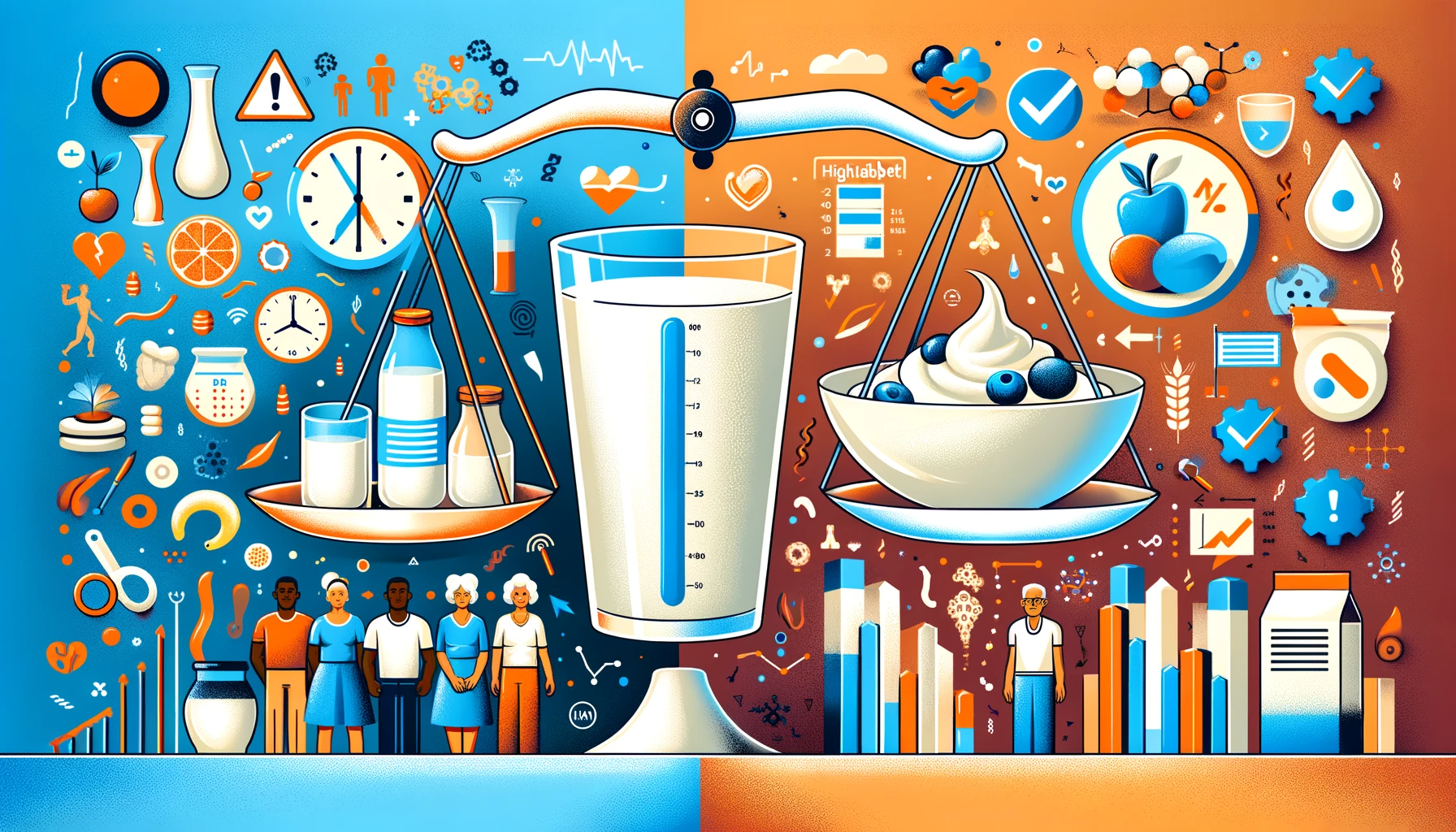Study shows low-fat milk may increase prediabetes risk, high-fat yogurt lowers it
In a recent study published in The American Journal of Clinical Nutrition, researchers determined the association between dairy consumption and the incidence of prediabetes. They also evaluated associations between dairy product type and metabolic factors, lifestyle behavior, and foods as potential factors underlying the relationship between dairy intake and prediabetes.
 Study: Dairy consumption and incident prediabetes: prospective associations and network models in the large population-based Lifelines Study
Study: Dairy consumption and incident prediabetes: prospective associations and network models in the large population-based Lifelines Study
Prediabetes is a condition in which glucose levels in the blood are higher than the normal limit but less than the cutoff for diabetes. It raises cardiovascular disease and type 2 diabetes risk, underscoring the need to identify modifiable contributory factors, such as food, to avoid this disease. Dairy products, which provide vitamins and minerals, can also contain detrimental substances such as salt, saturated fat, and added sugars. The evidence on the link between dairy consumption and prediabetes is mixed.
About the study
In the present study, researchers investigated whether prediabetes risk at baseline was associated with particular dairy products.
The study included 74,132 Lifelines study participants. The researchers measured baseline dairy consumption using validated flower-food frequency questionnaires (Flower-FFQs). At follow-up, prediabetes was assessed using the World Health Organization (WHO)/International Expert Committee (IEC) guidelines as fasting blood glucose ranging from 110 to 125 mg/dL and glycated hemoglobin (HbA1c) levels ranging from 6.0% to 6.5%.
The researchers used Poisson regression modeling to calculate the relative risk (RR) values adjusted for demographic factors (age, gender, educational attainment), lifestyle behavior (physical activity, smoking status, alcohol intake), food consumption (calorie intake, food groups), and diabetes history among family members. In addition, they used mixed-graphical modeling networks to assess interconnections. The researchers conducted baseline evaluations from 2006 to 2013 and subsequent assessments from 2014 to 2018, with follow-ups scheduled every five years.
General practitioners and family members recruited individuals, and they also self-registered online. The dairy products investigated included fermented dairy, yogurt, milk, cream, ice cream, and cheese. The team withdrew blood from all participants at study initiation and follow-up evaluations to determine fasting blood glucose levels using the glucose hexokinase technique and HbA1c using turbidimetric inhibition immunoassays.
The researchers used the American Diabetes Association’s (ADA) prediabetes criteria for sensitivity analysis, including fasting blood glucose levels and HbA1C values. Adjustments for possible confounders such as low-density lipoprotein cholesterol (LDL-C), triacylglycerols (TAGs), hypertension, and waist circumference were also made. Pregnant women, those under the age of 18 years, those with incomplete dietary data, psychiatric disorders, and those with a short life expectancy were all excluded from the research. Individuals with implausible calorie consumption, prediabetes or diabetes, or missing prediabetes data at baseline were also eliminated. The study also excluded 27,710 individuals without follow-up data, 5,272 individuals with missing prediabetes data, and 461 individuals who developed diabetes at follow-up.
Results
The mean participant age was 46; 60% were female, and 19% were smokers. The mean value of dairy consumption was four servings per day, mainly comprising high-fat-type cheese, low-fat-type milk, and low-fat-type yogurt in portions of 1.2 servings, 0.6 servings, and 0.2 servings per day, respectively. The mean values for waist circumference and body mass index (BMI) were 89 cm and 26 kg/m2, respectively, and 12% of participants were obese (body mass index equal to or above 30 kg m-2).
Individuals with increased daily dairy consumption (uppermost quartile, mean of six servings per day) compared to those with lower dairy consumption (lowermost quartile, mean of two servings per day) were older (mean age, 48 years compared to 43 years), more physically fit (220 minutes per week vs. 180 minutes per week), had elevated alcohol consumption (7.9 vs. 7.0), had elevated blood pressure more often (25% vs. 21%), and had marginally higher total cholesterol levels and waist circumference.
Among the 74,132 Dutch participants, 3.7% developed prediabetes. Most dairy products had neutral associations with prediabetes, with low-fat-type milk and plain milk consumption increasing the risk. High-fat-type yogurt (25% of yogurt consumption) was related to a lower risk. Low-fat-type milk was linked to energy-dense foods like meat, cheese, and bread, while high-fat-type yogurt showed no clear association with lifestyle risk factors and food consumption.
High-fat-type dairy consumption was linked to a lower prediabetes risk among individuals over 60 years old, but non-significant associations were found for other ages. High-fat-type yogurt was related to lower prediabetes risk in highly educated individuals, while low-fat-type cheese was related to higher risk. Baseline diabetes risk scores were linked to the total dairy intake and all dairy products, with a higher risk resulting in reduced high-fat-type dairy and increased low-fat-type dairy intake.
Overall, the study findings showed a relationship between low-fat milk intake and prediabetes, with plain and low-fat milk associated with a greater risk in the top quartile. In contrast, high-fat-type yogurt was related to a reduced risk. However, this link was no longer significant after controlling for other food categories. The low centrality and predictability for low-fat milk consumption might be due to calorie intake and waist size. High-fat-type yogurt was linked to a decreased incidence of prediabetes only among those with high educational attainment, presumably due to a combination of risk factors. More study is needed to uncover the underlying processes that relate yogurt to diabetes.
- Isabel AL. Slurink et al., Dairy consumption and incident prediabetes: prospective associations and network models in the large population-based Lifelines Study. The American Journal of Clinical Nutrition, 118 (2023), 1077–1090. DOI: https://doi.org/10.1016/j.ajcnut.2023.10.002, https://www.sciencedirect.com/science/article/pii/S0002916523661763
Posted in: Men's Health News | Medical Research News | Medical Condition News | Women's Health News
Tags: Alcohol, Blood, Blood Pressure, Body Mass Index, Bread, Cardiovascular Disease, Cholesterol, Diabetes, Fasting, Food, Frequency, Glucose, Glycated hemoglobin, HbA1c, Hemoglobin, Immunoassays, Life Expectancy, Lipoprotein, Meat, Minerals, Nutrition, Physical Activity, Prediabetes, Research, Smoking, Type 2 Diabetes, Vitamins

Written by
Pooja Toshniwal Paharia
Dr. based clinical-radiological diagnosis and management of oral lesions and conditions and associated maxillofacial disorders.


